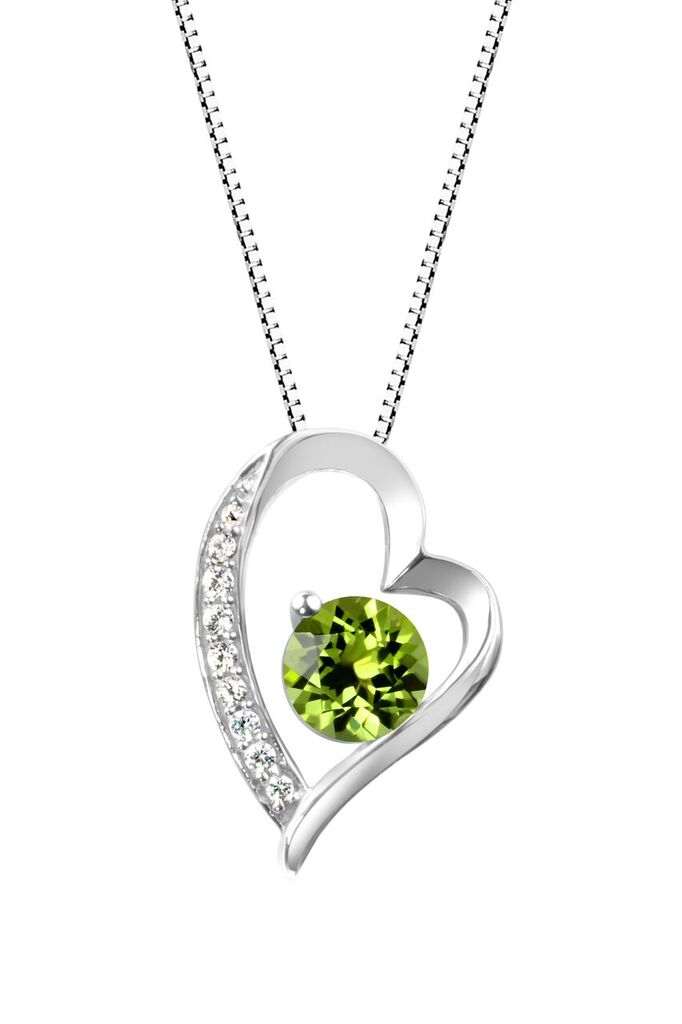Peridot, or evening emerald as it’s often called due to the allure of its green color, is the official birthstone of August. It’s also the stone given on the 16th wedding anniversary. Let’s learn more about this fascinating gemstone, shall we?
A little lesson in history

For over 3,500 years, peridot was mined from St. John (a volcanic island 188 miles east of Aswan, Egypt), but was forgotten for many centuries, only to be rediscovered around 1900. The ancient Romans and Greeks are said to have been very fond of peridot, as were Egyptians. Many historians even believe that some of the dark green gemstones worn by the Egyptian Queen Cleopatra were peridot and not emeralds, as is widely believed. Another example of mistaken identity is the eminent jewel gracing the shrine of the Three Holy Kings in Cologne Cathedral. For centuries, it was believed to be an emerald and only recently has been identified as peridot. Peridot was also known to ancient Hebrews and is listed both as one of the stones used by Aaron as the second gemstone used on his piece of armor.
What does the lore say?
Many people believe that peridot has the ability to calm the nerves and foster a feeling of love among bearers. The bearer may also experience an increase in patience and a general sense of vitality. Said to ward off nightmares, peridot was known to possess healing properties and promote a healthy mental outlook. Some even say that ancient users would grind up the stone and ingest it to ease the pain of childbirth, prevent heart problems, reduce a fever and even slow down the process of aging. daftar royalhoki77 slot pulsa tanpa potongan
Facts you should know about
Peridot is one of the few stones that come in only one color: green, but it can range from lime and yellow green to olive green and medium dark green. The most valuable of these lovely greens is the dark-olive green color. When it comes to clarity, the peridot includes inclusions or internal "imperfections" which consist of either cracks or substances inside the gemstone made during the process of the gemstone's formation. Tiny drops of silica glass resembling "fingerprints" and "lily pads" are the most common inclusions. A reflection of fibrous inclusions creating a silk-like appearance is also very common; this is known throughout the gem trade as "silk".
link slot maxwin terbaik.
Peridot is the softest translucent gemstone ranking only 6.5 on Moth's scale of relative hardness, making it softer than an emerald, garnet and quartz. This means that a sharp blow could cause it to split and break, so care should be taken with your peridot jewelry. Also, because the stone is sensitive to heat and acids, it's a good idea to keep it at a safe distance from steam cleaners and household chemicals.
The Last Word
Shopping for high-quality peridot jewelry? Get in touch with King’s Jewelry today! Celebrating Love for over 100 Years, we are a locally owned, family-operated jewelry chain that can help you find just what you are looking for.
